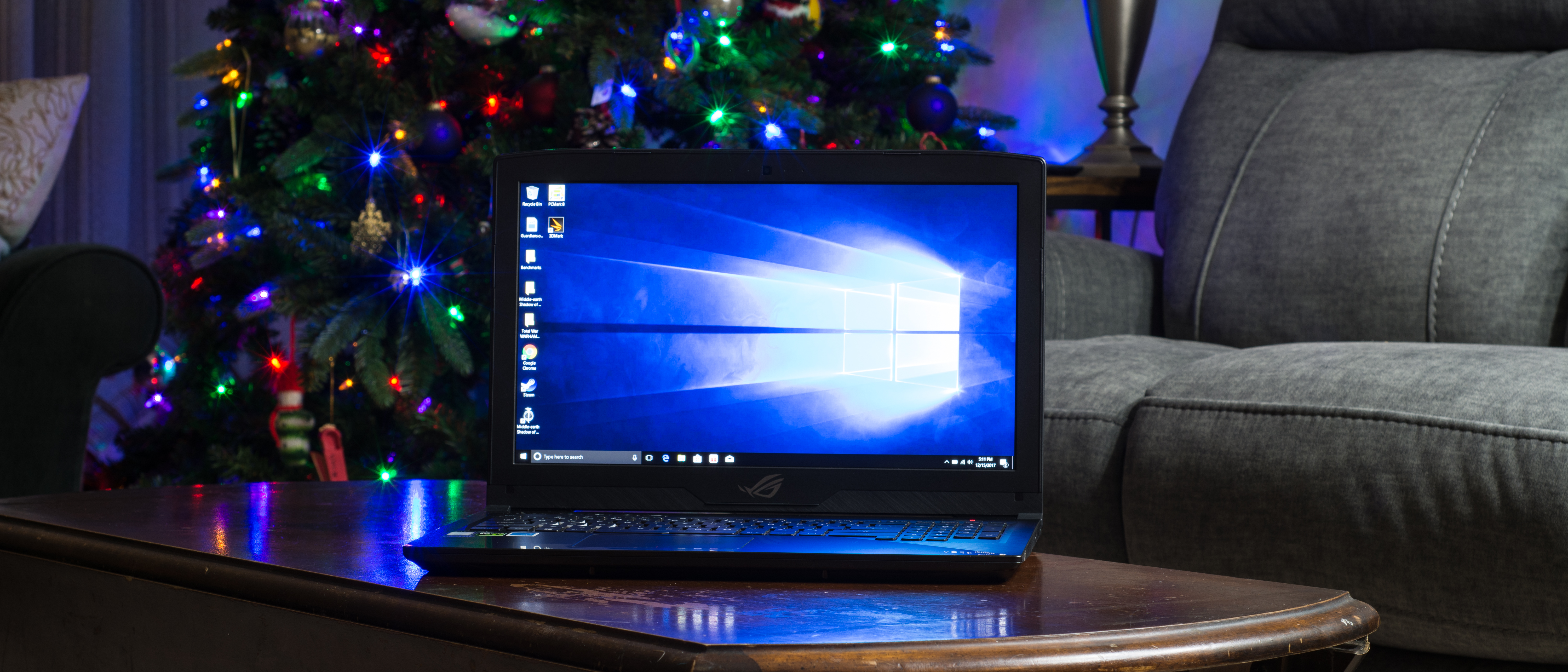TechRadar Verdict
The Asus Rog Strix G503 fails to set itself apart from the crowd of entry-level gaming laptops in any meaningful way, from price to power, despite strong battery life and a beautiful screen.
Pros
- +
Stunning 1080p screen
- +
Great battery
- +
Lovely RGB keyboard
Cons
- -
Storage is slow
- -
Fans are distracting
- -
A magnet for fingerprints
Why you can trust TechRadar
The best gaming laptops have come a long way over the years. Gone are the days of the difficult division between power and portability. Those bulky monsters we all put up with just a few years ago look downright ancient compared to today’s stylish powerhouses. Even affordable gaming laptops like the Asus ROG Strix GL503 are bursting with the kind of power that was impossible just a few years ago.
And, while the Asus ROG Strix will easily put older laptops to shame, it’s not going to outpower the backdrop of other modern gaming laptops. The ROG Strix GL503 lacks the ‘wow’ factor, sticking to a 1080p display and a GTX 1050 graphics card. It’s not as powerful as either the MSI GE62 Apache Pro or the Dell Inspiron 15 7000 Gaming – but it still lands between the two in price.
Here is the Asus ROG Strix GL503 configuration sent to TechRadar for review:
CPU: 2.8GHz Intel Core i7-7700HQ (quad-core, 6MB cache, up to 3.8GHz)
Graphics: Nvidia GeForce GTX 1050 (4GB GDDR5 VRAM); Intel HD Graphics 630
RAM: 16GB DDR4 (dual channel; 2,400MHz)
Screen: 15.6-inch FHD (1,920 x 1,080) anti-glare panel
Storage: 1TB FireCuda SSHD
Ports:1 x USB 3.1 Type-C,4 x USB 3.0, 1 x RJ-45 LAN, 1 x HDMI, 1 x mini DisplayPort , 1 x SD card reader, 1 x combination audio jack
Connectivity: 802.11ac (2 x 2), Bluetooth 4.1
Camera: 1080p webcam
Weight: 5.09 pounds (2.3kg)
Size: 15.1 x 10.3 x 0.9 inches (38.3 x 26.2 x 2.29cm; W x D x H)
Price and availability
The Asus Rog Strix GL503 configuration we tested will set you back $1,099 (£1,473.99, AU$2,599), but there are more powerful configurations available. The Hero Edition ups the display refresh rate to 120Hz, pumps the graphics card up to a GTX 1060 with 6GB of video memory and adds a 256GB solid-state drive for $1,599 (£1,409.99, AU$2,599.00).
Up against the Apache Pro and the Inspiron 15 7000, the Asus ROG Strix GL503 sits right in the middle of the pricing stack. Spec-wise, they’re about the same, with the Apache featuring a more powerful graphics chip, and thus better scores in our benchmarks. It’s $300 more than the GL503 in the US, but it also comes with more storage.
We haven't yet tested out the Dell Inspiron 15 7000 at the time of this writing; but, on paper, it already beats the GL503 in value. You get the 1060 GPU in a super-thin frame starting at just $899 (£799, AU$1,199).
Design
The Asus Rog Strix GL503 is definitely a gaming laptop. The top features the ROG logo in a beautiful reflective metal lid. The lid itself brushed metal, but it goes a step further by adding lighting to the logo. By itself, it looks great, but the addition of light makes it look awesome.
The GL503 is thinner than the Apache Pro and a little lighter, too. At just over 5 pounds (2.2kg), it's about average for a gaming laptop. There are no surprises with the power brick, either. It's one of the smaller ones we've tested, which is great news if you're going to be schlepping the GL503 around in a laptop bag.
Sign up for breaking news, reviews, opinion, top tech deals, and more.
The 1080p display on the GL503 is easily its finest feature. Games and movies look fantastically crisp, clean and colorful. When watching Guardians of the Galaxy on the GL503, we had to double-check the specs to make sure it wasn't a 1440p or UHD screen. This is absolutely the best part of the laptop.
The interior of the Strix GL503 is also extremely attractive, with a full-sized programmable RGB keyboard. The chiclet-style keys might feel kind of mushy, but travel is just right and it feels comfortable to use. The trackpad is also entirely adequate, with no notable good or poor qualities.
However, the trackpad is, quite frankly, a fingerprint magnet. No amount of hand washing will stop you from marking up the obsidian black of your GL503. It just wants to pick up a little reminder of you every time you use it.
It’s particularly noticeable on the metal sections of the chassis. Just one touch is all it takes, and the prints won’t disappear. They can be wiped off with a soft cloth, so you’ll definitely want to pack a few in your laptop bag.


